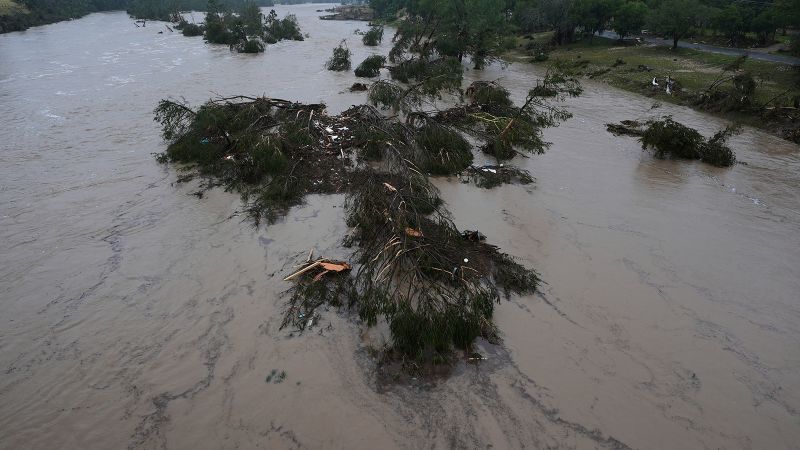New federal regulations are expected to jolt up Hawaii electricity costs and make it harder for the state to achieve its clean energy goals.
Changes enacted July 4 under President Donald Trump’s domestic policy bill threaten to imperil several planned utility-scale solar farms and thousands of additional residential rooftop solar systems across the state by eliminating a 30% federal tax credit for such project costs much sooner than previously slated.
Potentially affected projects include one on Oahu that would be the biggest solar farm in the state and two on Maui that are on or near a bubble for starting construction by July 5, 2026, in order to qualify for credits under the new law.
Other planned solar farm projects, including two on Kauai projected to save ratepayers $800 million over 25 years and one slated to provide 20% of electricity needs on Hawaii island, are not expected to qualify for credits, putting their prospects in doubt or making them more costly for ratepayers.
For residential rooftop solar, credits will end for systems not placed in service by the end of this year, which is expected to result in a steep drop in what had been several thousand new systems added statewide annually in recent years.
“This new federal law is a gut punch to Hawaii’s rooftop solar market,” Rocky Mould, executive director of the Hawaii Solar Energy Association, said in an email.
Mould expects industry job losses plus future price increases for system components because of anticipated cutbacks in manufacturing and demand nationally.
“The sudden elimination of the federal residential tax credit after this year throws the market into disarray,” he said.
Hawaii, largely because of its geographic isolation, has the highest electricity prices in the nation and is subject to unique consequences of the new renewable energy policy changes.
Both rooftop and utility-scale solar systems have been the main driver in replacing imported foreign oil and diesel fuel-burning combustion turbine power plants that cost Hawaii ratepayers more for electricity while also emitting higher amounts of greenhouse gases contributing to climate change.
Previously, federal tax credits were available for residential projects that went into service before 2034 and for utility-scale projects that began construction before 2034.
Longer-term impacts
The effects on Hawaii ratepayers from the accelerated elimination of tax credits for utility-scale solar projects are expected to be longer-term, and could include higher prices from fossil fuel-fired power plants running longer and higher prices for power generated by solar farms developed without tax credit subsidies.
Hawaiian Electric, which provides power to Oahu, Maui County and Hawaii island as the state’s largest utility, said there’s no question the new federal law will make it more difficult and potentially more costly to reach the state’s goal to have 100% of electricity generated by renewable sources by 2045.
“Any loss in renewable energy tax credits will likely result in higher prices for new renewable projects, which rely on such incentives to provide clean, affordable energy,” Rebecca Dayhuff-Matsushima, Hawaiian Electric vice president for resource procurement, said in a statement.
In 2024 new utility-scale and rooftop solar power systems boosted the share of electricity generated by renewable sources for Hawaiian Electric to 36% from 33% a year earlier.
Those additions included the 60-megawatt AES Kuihelani Solar farm on Maui and three projects on Oahu: Hoohana Solar I (52 megawatts), Kupono Solar (42 megawatts) and AES West Oahu Solar (12.5 megawatts).
Several thousand new private rooftop solar system installations with a combined 61 megawatts of capacity also expanded use of renewable energy that generally costs less than power produced from fossil fuel.
Now with new federal tax credit deadlines, rooftop solar installations are expected to drop next year while utility-scale projects face major challenges to obtain tax credits if “substantial” construction does not begin by July 5, 2026.
Mould expects a near-term rush of homeowners trying to beat the Dec. 31 deadline, but also said permitting backlogs and interconnection delays make this challenging.
Some solar system loan companies and installers are considering cutoff dates as soon as September or October to avoid risk of missing the deadline, according to Mould, who also said there are efforts to expedite permitting and interconnections given the federal law change.
Marco Mangelsdorf, a ProVision Solar executive who has been in the business locally for 25 years, said a “shock wave” is about to hit the industry, resulting in a drop-off in business, job cuts and even some company closures.
A decade ago, after the state Public Utilities Commission ended a popular incentive program in October 2015 for rooftop solar installations that allowed system owners to sell excess electricity to utilities at the retail rate, the number of building permits issued for new systems fell from 14,249 in 2015 to 8,509 in 2016 and then to about 5,000 in each of the next two years.
There was a moderate rebound in subsequent years that reached 10,848 permits in 2023, according to data from Mangelsdorf, so there is some optimism that the anticipated falloff in rooftop solar system additions won’t be permanent.
Mould noted the state has a renewable energy income tax credit ranging from 22.5% to 35% that is capped at $5,000 per residential system.
“Given Hawaii’s high electricity prices, solar and energy storage still make a ton of sense,” he said.
Still, other factors including stiff tariffs being imposed by Trump on goods imported from foreign countries could make systems even more expensive.
Project pipeline
For utility-scale projects, a more complicated landscape lies ahead.
Under the new law, such projects that start construction by July 5, 2026, and go into service within four years from then can obtain federal tax credits.
Dayhuff-Matsushima said an upcoming request for renewable energy project proposals sought by Hawaiian Electric likely will result in projects that aren’t eligible for federal tax credits.
More immediately, four solar farm projects where renewable energy developers are negotiating contracts with Hawaiian Electric have projected construction schedules close to the tax credit deadline.
Of the four, two anticipate starting construction after the deadline, and two expect to start construction three to six months before the deadline.
The two projects in the worst spot are Keamuku Solar planned for Hawaii island, where construction of the 86-megawatt facility is projected to begin in 2027, and a 40-megawatt expansion of Kuihelani Solar on Maui, where construction is projected to begin between July and September of 2026.
In a better position are the 120-megawatt Mahi Solar project on Oahu and the 20-megawatt Pulehu Solar project on Maui, with construction anticipated to start in the first quarter of 2026, making any potential delays in regulatory and permitting approvals a critical issue.
Two developers pursuing the four projects, AES Corp. and Longroad Energy, did not respond to requests for comment.
AES also plans two solar farms on Kauai, where ratepayers own the utility company.
Kaua‘i Island Utility Cooperative announced in March that the two projects — Mana Solar and Kaawanui Solar with a combined capacity of 78 megawatts — were expected to displace the use of 13 million gallons of diesel annually while saving ratepayers $800 million over 25 years, generating enough power for over 30,000 homes and bringing the utility’s share of renewable energy to nearly 80% by 2028.
Construction, however, isn’t projected to begin until 2027, according to a PUC filing.
It’s possible that development can be accelerated for one or more Hawaii solar farm projects. However, Trump administration officials also aim to redefine what constitutes beginning construction, possibly requiring that a “substantial portion of a subject facility has been built,” according to an executive order Trump issued Monday.
“For too long, the Federal Government has forced American taxpayers to subsidize expensive and unreliable energy sources like wind and solar,” the order states. “The proliferation of these projects displaces affordable, reliable, dispatchable domestic energy sources, compromises our electric grid, and denigrates the beauty of our Nation’s natural landscape.”
Planned Hawaii solar farm projects also may have to contend with tariffs and further restrictions on tax credits depending on where components are made.
2045 outlook
Mark Glick, director of the Hawaii State Energy Office, said federal tax credit law changes will result in higher electricity prices but won’t block the state from achieving its 2045 clean energy goal.
“Neither the U.S. Congress nor federal tax credits are driving Hawaii’s commitment to be more energy self-sufficient,” he said in an email.
The state’s strategy to achieve the 2045 goal involves a mix of renewable energy sources, including biofuel, hydrogen, geothermal, wind and liquefied natural gas.
New federal tax credit deadlines also apply to wind farms but aren’t expected to upset one near-term project on Maui representing extended operation of an existing project at a lower cost. There is a more ambitious plan to develop a 400- to 450-megawatt offshore wind farm to supply about 25% of Oahu’s electricity need, though this project has a longer-term horizon and faces other challenges.
Glick expressed confidence that regulators, utilities and energy producers in Hawaii will, in the long term, devise ways to maintain economic feasibility for new utility-scale solar farms while rooftop solar systems continue to offer savings even without federal tax credits.
“Congress removing the tax credits doesn’t change the fact that in Hawaii, electricity produced by solar is cheaper than electricity produced by oil,” he said. “People and businesses in Hawaii are smarter than the short-sighted Congress because we understand that our economy will remain vulnerable to the devastating effects of oil price volatility as long as diesel and low sulfur oil are the majority fuel for generating electricity.”
———
Solar farm development pipeline
Six planned utility-scale solar farm projects in Hawaii could be upset by a new federal law reining in tax-credit incentives.
>> Mahi Solar on Oahu, 120 megawatts
>> Kuihelani Phase 2 Solar on Maui, 40 megawatts
>> Pulehu Solar on Maui, 20 megawatts
>> Keamuku Solar on Hawaii island, 86 megawatts
>> Mana Solar on Kauai, 35 megawatts
>> Kaawanui Solar on Kauai, 43 megawatts
———
Source: Hawaii State Energy Office
/cloudfront-us-east-1.images.arcpublishing.com/gray/ARGR4VYT5VBMFPDFQTR3QW6P24.jpg)




 Politics1 week ago
Politics1 week ago
 Education1 week ago
Education1 week ago
 World1 week ago
World1 week ago
 News4 days ago
News4 days ago
 News1 week ago
News1 week ago
 News6 days ago
News6 days ago
 Technology1 week ago
Technology1 week ago













